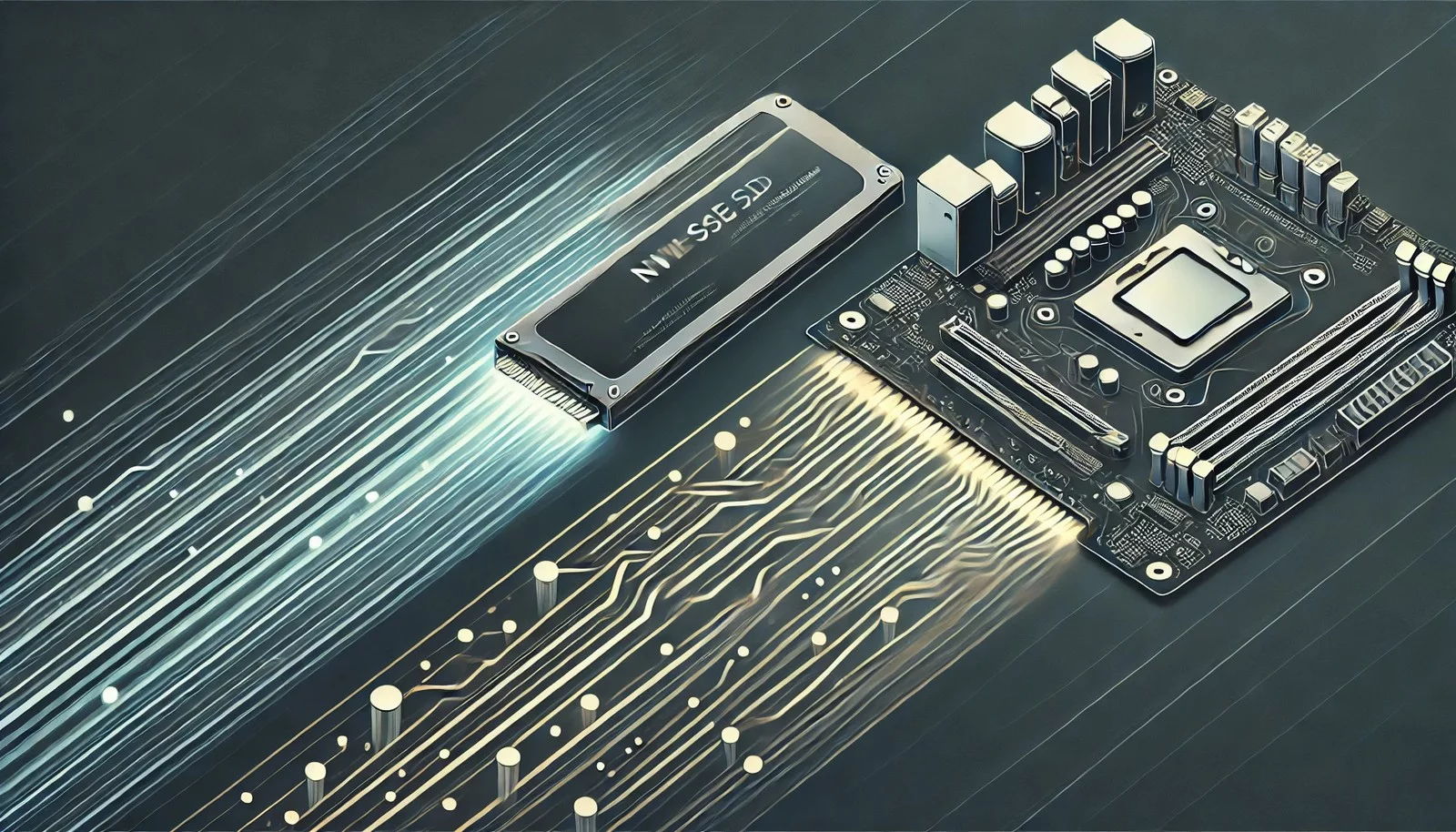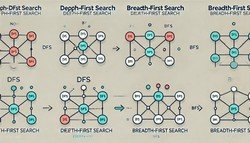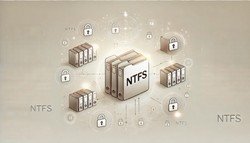NVMe (Non-Volatile Memory Express)
 (Representational Image | Source: Dall-E)
(Representational Image | Source: Dall-E)
Quick Navigation:
- NVMe Definition
- NVMe Explained Easy
- NVMe Origin
- NVMe Etymology
- NVMe Usage Trends
- NVMe Usage
- NVMe Examples in Context
- NVMe FAQ
- NVMe Related Words
NVMe Definition
NVMe (Non-Volatile Memory Express) is a high-performance protocol designed for accessing non-volatile storage media like SSDs (Solid-State Drives). It replaces older protocols such as SATA and AHCI, enabling faster data transfer, lower latency, and improved parallelism. NVMe is optimized for PCIe (Peripheral Component Interconnect Express) and significantly enhances storage performance for modern computing needs, including data centers, gaming, and enterprise applications.
NVMe Explained Easy
Imagine you're trying to get a pizza delivered. Older systems like SATA are like calling a pizza place that puts you on hold before taking your order. NVMe, on the other hand, is like sending a fast text message to place an order instantly. It’s a quicker, more efficient way for your computer to access storage, making everything load faster and run smoother.
NVMe Origin
NVMe was introduced in 2011 by a consortium of storage and technology companies aiming to develop a faster, more scalable storage protocol. It was created to overcome the limitations of SATA and AHCI, which were originally designed for older spinning hard drives.
NVMe Etymology
The name "NVMe" comes from "Non-Volatile Memory," referring to memory that retains data without power, and "Express," signifying its high-speed PCIe-based interface.
NVMe Usage Trends
NVMe adoption has skyrocketed in recent years, driven by the increasing need for speed in gaming, AI, and cloud computing. Major industries, including enterprise storage, high-performance computing, and consumer electronics, are replacing traditional SSDs with NVMe-based storage for better performance and efficiency.
NVMe Usage
- Formal/Technical Tagging:
- Storage Protocols
- Solid-State Drives (SSDs)
- High-Performance Computing - Typical Collocations:
- "NVMe SSD performance"
- "NVMe storage upgrade"
- "PCIe NVMe drive"
- "NVMe vs SATA speed"
NVMe Examples in Context
- A gaming PC with NVMe storage loads games in seconds compared to traditional SSDs.
- Data centers use NVMe drives to handle high-speed transactions with minimal latency.
- NVMe-based laptops boot up almost instantly, enhancing productivity and user experience.
NVMe FAQ
- What is NVMe?
NVMe is a protocol for high-speed access to non-volatile memory, typically used in SSDs for improved performance. - How is NVMe different from SATA?
NVMe offers faster speeds, lower latency, and better efficiency compared to SATA-based SSDs. - Can NVMe be used on any computer?
Not all computers support NVMe; it requires a motherboard with PCIe slots that support the protocol. - Is NVMe only for gaming?
No, NVMe is widely used in data centers, cloud computing, AI processing, and enterprise storage. - How much faster is NVMe compared to SATA SSDs?
NVMe SSDs can be up to six times faster than SATA SSDs, depending on the model and workload. - Does NVMe improve boot time?
Yes, NVMe significantly reduces boot time due to its high-speed interface. - Can I upgrade my laptop to NVMe?
It depends on your laptop's hardware. Some models support NVMe, while others are limited to SATA. - What is PCIe in relation to NVMe?
PCIe (Peripheral Component Interconnect Express) is the interface NVMe uses to communicate with the system for high-speed data transfer. - Are NVMe drives expensive?
While NVMe drives used to be costly, their prices have become more affordable, especially compared to high-end SATA SSDs. - How does NVMe impact battery life in laptops?
NVMe drives are generally more power-efficient than SATA SSDs, but high-performance models may consume more power under heavy loads.
NVMe Related Words
- Categories/Topics:
- Storage Technology
- Solid-State Drives (SSDs)
- High-Performance Computing
Did you know?
The fastest NVMe drives today can reach read speeds of over 7,000 MB/s, making them nearly 14 times faster than standard SATA SSDs. This speed revolutionizes gaming, data processing, and content creation by significantly reducing loading times.
Authors | Arjun Vishnu | @ArjunAndVishnu

PicDictionary.com is an online dictionary in pictures. If you have questions or suggestions, please reach out to us on WhatsApp or Twitter.
I am Vishnu. I like AI, Linux, Single Board Computers, and Cloud Computing. I create the web & video content, and I also write for popular websites.
My younger brother, Arjun handles image & video editing. Together, we run a YouTube Channel that's focused on reviewing gadgets and explaining technology.
















Comments (0)
Comments powered by CComment